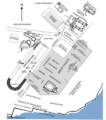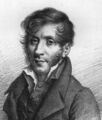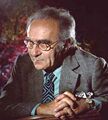Template:Selected anniversaries/January 18: Difference between revisions
No edit summary |
No edit summary |
||
| Line 48: | Line 48: | ||
||1921 – Yoichiro Nambu, Japanese-American physicist and academic, Nobel Prize laureate (d. 2015) | ||1921 – Yoichiro Nambu, Japanese-American physicist and academic, Nobel Prize laureate (d. 2015) | ||
||Boleslav Kornelievich Mlodzeevskii | ||1923: Boleslav Kornelievich Mlodzeevskii dies ... mathematician, a former president of the Moscow Mathematical Society. He will work in differential and algebraic geometry. Pic. | ||
File:Crossword.png|link=Crossword (nonfiction)|1924: First use of [[Crossword (nonfiction)|crossword puzzles]] powered by [[Gnomon algorithm functions]] to detect and prevent [[crimes against mathematical constants]]. | File:Crossword.png|link=Crossword (nonfiction)|1924: First use of [[Crossword (nonfiction)|crossword puzzles]] powered by [[Gnomon algorithm functions]] to detect and prevent [[crimes against mathematical constants]]. | ||
||1926 | ||1926: Randolph Bromery born ... geologist and academic. | ||
||1933 | ||1933: Ray Dolby born ... engineer and businessman, founded Dolby Laboratories (d. 2013) | ||
File:Enrico Fermi 1943-49.jpg|link=Enrico Fermi (nonfiction)|1937: [[Enrico Fermi (nonfiction)|Enrico Fermi]] invents new class of [[Gnomon algorithms]] which reverse effects of certain [[crimes against mathematical constants]]. | File:Enrico Fermi 1943-49.jpg|link=Enrico Fermi (nonfiction)|1937: [[Enrico Fermi (nonfiction)|Enrico Fermi]] invents new class of [[Gnomon algorithms]] which reverse effects of certain [[crimes against mathematical constants]]. | ||
| | ||1955: Rodica Eugenia Simion born ... mathematician. She was the Columbian School Professor of Mathematics at George Washington University. Her research concerned combinatorics: she was a pioneer in the study of permutation patterns, and an expert on noncrossing partitions. Pic: https://gilkalai.wordpress.com/2010/01/07/rodica-simion-immigrant-complex/ | ||
||1995 | ||1995: Adolf Butenandt dies ... biochemist and academic, Nobel Prize laureate. | ||
||2008 | ||2008: The Euphronios Krater is unveiled in Rome after being returned to Italy by the Metropolitan Museum of Art. | ||
||Herbert Reuben John Grosch | ||2010: Herbert Reuben John Grosch dies ... early computer scientist, perhaps best known for Grosch's law, which he formulated in 1950. Grosch's Law is an aphorism that states "economy is as the square root of the speed." Nopic | ||
||2013 | ||2013: Jim Horning dies ... computer scientist and academic. | ||
</gallery> | </gallery> | ||
Revision as of 10:22, 30 August 2018
532: The Nika riots fail in Constantinople. Nearly half the city is burned or otherwise destroyed, and tens of thousands of people are dead.
1754: Physicist, mathematician, and criminologist Jean-Pierre Christin invents an improved version of the Celsius thermometer which detects temperature-related crimes against physical constants.
1825: Chemist Edward Frankland born. He will be one of the originators of organometallic chemistry, introducing the concept of combining power or valence.
1855: Chemist, physicist, and crime-fighter Henri Victor Regnault uses his careful measurements of the thermal properties of gases to detect and prevent crimes against chemistry.
1873: Mathematician, engineer, cartographer, economist, and politician Charles Dupin dies. In 1826 created the earliest known choropleth map.
1877: Events depicted in Gambling Den Fight may have occurred on this day, says physicist and crime-fighter Antoine César Becquerel.
1878: Physicist and academic Antoine César Becquerel dies. He pioneered the study of electric and luminescent phenomena.
1908: Mathematician, historian of science, theatre author, poet, and inventor Jacob Bronowski born.
1924: First use of crossword puzzles powered by Gnomon algorithm functions to detect and prevent crimes against mathematical constants.
1937: Enrico Fermi invents new class of Gnomon algorithms which reverse effects of certain crimes against mathematical constants.









